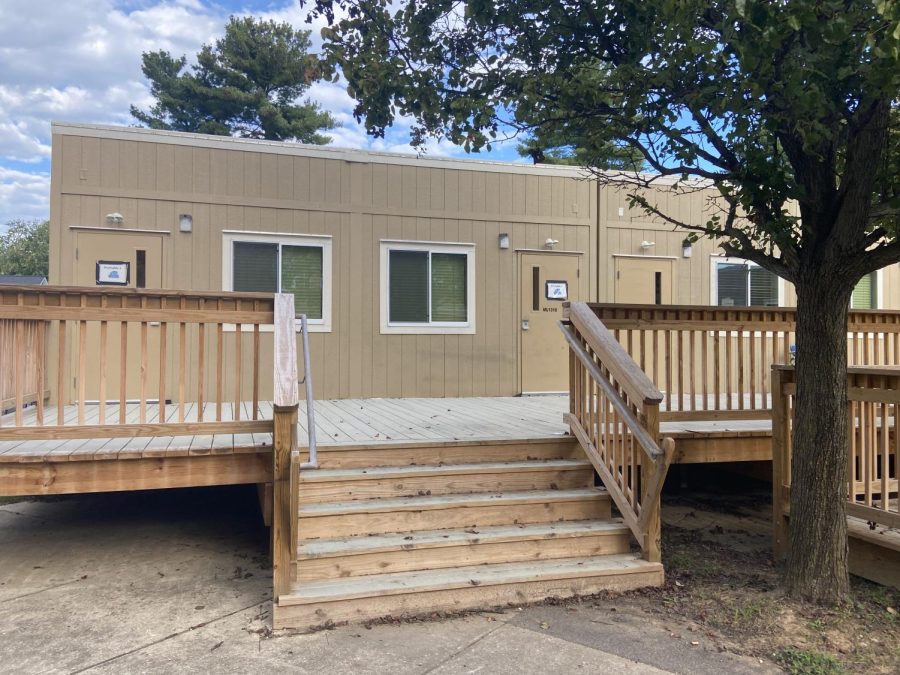Portables prompt problems for WCHS students and teachers
The portables were a new addition to WCHS in order to accommodate the growing number of students. Pictured is Portable 1, where many students have AP NSL class.
October 26, 2021
You’ve probably noticed the tan-colored structures with walkways and a courtyard outside of WCHS. However, do you know what they are? Well they’re called portables: new classrooms that were added in 2020 to accommodate the growing number of students at WCHS. With school being in-person full-time this year, many students are now experiencing the portables for the first time.
Many students decided to not return in-person in the spring, which is why it wasn’t noticed that portables were added to WCHS for the 2020-2021 school year. Now, students who have classes in the portables are learning to adapt to this new environment. While the aspects are similar to regular classrooms, learning in the portables can be an adjustment for some.
“The classrooms are basically the same as inside, but the different part is being farther away from the building,” WCHS sophomore Leah Ginsburg said. “At times I feel disconnected from the rest of the school.”
One downside of the portables is that they are separate from WCHS. Despite the multitude of exits that lead to the portables, they are still stand-alone structures which can create a feeling of disconnect from everyone else inside. AP NSL teacher Bryan Clark, whose room is a portable, also shares similar opinions.
“Teaching in the portables also means being away from the rest of the school. I miss some of my colleagues and don’t have much time during the school day to go inside,” Clark said.
Distance also plays a role when it comes to issues students may have with these new learning units. For many, it can be a long walk from their previous class to get to the portables. Students have limited time between periods, so it can be essential to find a route that will get them outside and to class before the bell.
“It would probably be hard to have class in the portables in between periods because students only have five minutes to walk through the building, go outside and then get to class,” Ginsburg, who has class in the portables during first period, said.
Another challenge about having class in the portables is dealing with weather. Weather doesn’t only affect the students who have to walk to class, but also the teachers as they now have to deal with excess water and mud coming into the portables during inclement weather. Students come directly from outside into the portables, compared to in the building where they have chances to dry their shoes off as they walk to class.
“Portables have definitely affected classes with the weather aspect,” Clark said. “Rain means wet feet and wet floors which can create problems.”
While this has developed unique problems, the portables have also brought some benefits, one being a courtyard filled with tables and benches, which many students have been enjoying. The portables create a secluded area around the courtyard where students can sit to eat lunch or talk with friends. Especially when the weather is nice, the courtyard is an added bonus to having class outside in the portables.
“I like that the portables are outside because before first period I can sit in the courtyard and hangout with my friends,” Ginsburg said.
The portables have allowed WCHS to expand and create more classrooms. The addition of the portables alleviates overcrowding so students are able to learn productively and safely. As WCHS continues to expand, students most likely can expect to see the portables for years to come.
“If the portables become permanent, it would come down to how many students are enrolled at WCHS,” Clark said. “I think they will be here for a few years at least, but it depends on the number of students and the space needed.”



